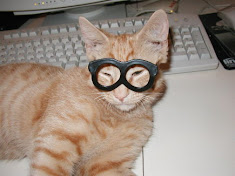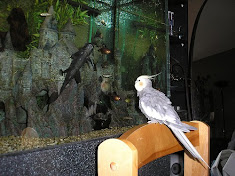 |
| Gerbil by Mike Lawrence |
Gerbils also communicate by many non-verbal signals. By looking for the use of body language you may be able to interpret what your pet is experiencing.
One common action is what looks like rubbing noses when they meet. This greeting action is actually a licking of each others mouths, as gerbils recognize each other by the taste of their saliva.
Another typical action is called 'drumming'. The gerbil stands up and quickly thumps the ground with its hind legs. This can be a warning signal to other members of the group when danger approaches, or a courting behavior between males and females. This 'drumming' is a learned action and you will sometimes find young gerbils imitating their parents when there is no danger around.
A gerbil that is excited will jump into the air with all four feet. Boxing movements of the front paws sometimes accompany this. These boxing movements are often playful, but sometimes can lead to something more serious. When gerbils fight they tend to box each other with their heads before starting to wrestle.
A gerbil will often sit upright. If it sniffs around while moving its head up and down, the animal is just being curious. However, if it stands in a frozen position with its paws folded as if praying, the gerbil is frightened.
If a gerbil rolls in front of another gerbil while turning its head and offering its throat, it is asking for a cleaning session. The other gerbil usually finds this an irresistible request and a thorough cleaning session ensues. If you see a gerbil thoroughly grooming itself it is a sign that they are relaxed and happy.
Although gerbils are very sociable creatures they can become irritated and want to be left alone. In this case a gerbil will push others away with its head. It will even push your hand away in this fashion.
An understanding of your pet gerbils' body language can add to your enjoyment of keeping these friendly creatures and help assure you of their well being.
About the Author: Written by Andi Wize
Article by http://Dog-and-Cat-Training.com Visit http://www.dog-and-cat-training.com/other-pets/ for more pets articles, over 100 dog and cat tips, and more!
Source: www.isnare.com
Permanent Link: http://www.isnare.com/?aid=64471&ca=Pets



0 comments:
Post a Comment